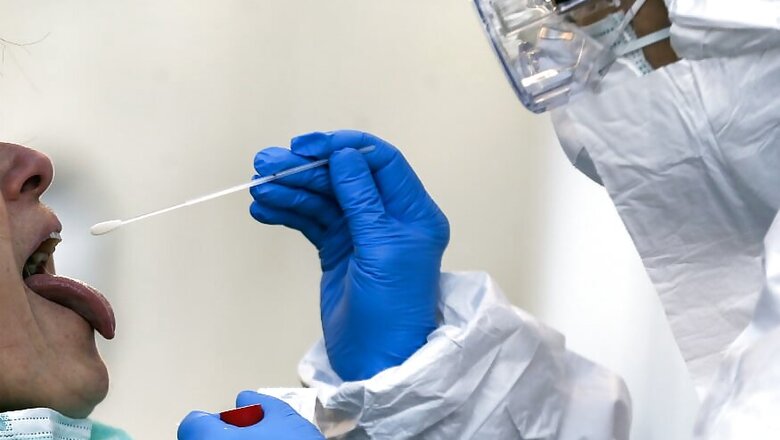Scientists Race Against Time to Find COVID-19 Drug - How Exactly Can we Find a Cure, Explains Report

views
As the entire world battles the COVID-19 pandemic, scientists are racing against time to find a vaccine, drug, or therapy to get rid of the novel virus. However, it is important to understand how exactly has coronavirus put the entire humankind on a back foot.
A recent article by The Atlantic's Sarah Zhang suggests that the virus is nothing but a amalgamation of 29 proteins. These proteins wage a war against over thousands of complex proteins that exist in the human body.
The much-needed cure to COVID-19 will require devising a mechanism that blocks the proteins from taking over the humans’ cellular machinery. It is these very 29 proteins that make the virus such a persistent enemy.
Scientists have been aggressively searching for a weakness in SARS-CoV-2, the coronavirus that causes COVID-19, since it was found as the source of the viral infection that first surfaced in China's Wuhan city. Researchers are studying these 29 proteins and how they engage with various parts of the human cell, with an aim to discover drugs in order to single out the host as opposed to the virus.
Antivirals seldom act as a miracle cures, quite unlike antibiotics that are prescribed to fight bacterial diseases. However, antivirals for HIV and Hepatitis C have be administered in batches of two or three drugs at a time because viruses can quickly mutate to become resistant.
However, SARS-CoV-2 does not seem to mutate especially quickly for a virus, said the report.
How to prevent the virus’s entry into a cell?
SARS-CoV-2 is enveloped in popsicle-shaped 'spike' proteins. These spikes are reportedly what give coronaviruses their name, because they create a crown, or corona-like appearance.
These coronaviruses, including SARS and MERS, bear such close resemblance in their spike proteins that scientists are refurbishing plans from SARS and MERS to combat SARS-CoV-2. The vaccine being developed by Moderna, for instance, was able to commence clinical trials as early as in March owing to the fact that it was based on earlier research on MERS spike protein, the report added.
The spike protein is also the centre of antibody therapy, which is said to be faster to develop than a new drug as it channelises the power of the human immune system. The immune system generates proteins called antibodies that dismember foreign agents, such as proteins of a virus.
Presently, many hospitals in the US are seeking to introduce antibody-rich plasma from COVID-19 survivors into the patients.
However, just fixing its spike protein to a receptor will not give SARS-CoV-2 an entry into the human cell. It does not become active till it is split into two. In order to finish what it started, it looks to latch on to another enzyme like furin, which can unknowingly stop by and activate the protein, the report said.
Many potential drugs seek to stop these enzymes from accidentally falling for the virus’s tricks.
Once the spike protein is activated, the virus, attaches itself with the host cell’s membrane. It inserts its genome and makes a grand entry and only then the infection begins to affect the person.
How to stop the virus from multiplying?
To an unsuspecting human cell, a naked SARS-CoV-2 genome appears like a particular type of RNA, a molecule that generally operates as instructions for creating new proteins. So much like a dedicated soldier, the human cell, innocuously begins pumping out viral proteins to create more viruses, the report said.
Multiplication is somewhat a difficult step, making it an ideal target for antivirals.
Besides proteins that allow it to multiply, and spike proteins that constitute a chunk of the viruses exterior capsule, SARS-CoV-2 has other secret weapons called "accessory proteins," whose function remains a mystery. "Accessory proteins" are distinct to this virus. These accessory proteins might permit the virus to dodge the human cell’s inbuilt antiviral defense in some way - another possible target for a drug, the report added.
How to prevent the immune system from going berserk?
In all probability, antivirals will be effective early in an infection, when the virus has not infected scores of cells or not replicated itself yet. However, if the antivirals are consumed too late, there is a risk that the immune component has already taken over.
Most COVID-19 patients, particularly those who fall severely sick, go through a cytokine storm, in which the disease triggers an "indiscriminate and runaway immune response," added the report.
Cytokine storms can also "further damage the lungs, sometimes permanently, by allowing fluid to build up in the tissue," said Stephen Gottschalk, an immunologist at St Jude Children’s Research Hospital was quoted as saying in the report.
Cytokine storms are not limited to SARS-CoV-2 or even infectious diseases. They can occur in patients with a genetic disorder, an autoimmune disease, or a bone marrow transplant, the report added.
A different way of treating COVID-19 is by treating the immune response as opposed to the virus. Most of the initial study into drug treatment against COVID-19 has centred around refurbishing existing drugs as they are the quickest way of providing something to a patient struggling in a hospital.
Doctors are familiar with their side effects, and companies, too, know how to manufacture them. It appears unlikely that these re-purposed drugs will be the panacea for the novel coronavirus. However, it may still be effective enough to keep a moderately ill person from becoming critically sick, which is just about enough to preserve a ventilator, the report noted.




















Comments
0 comment